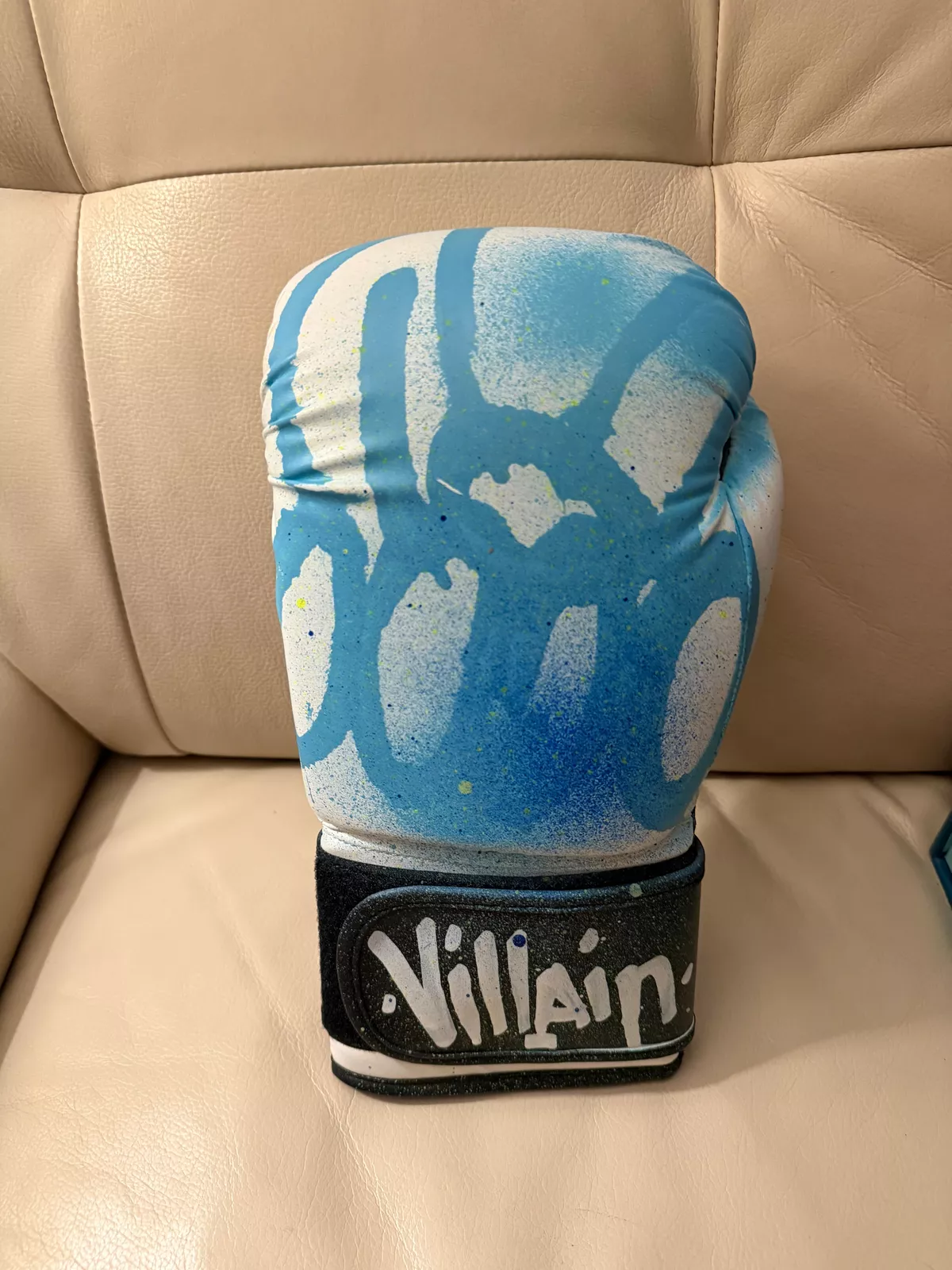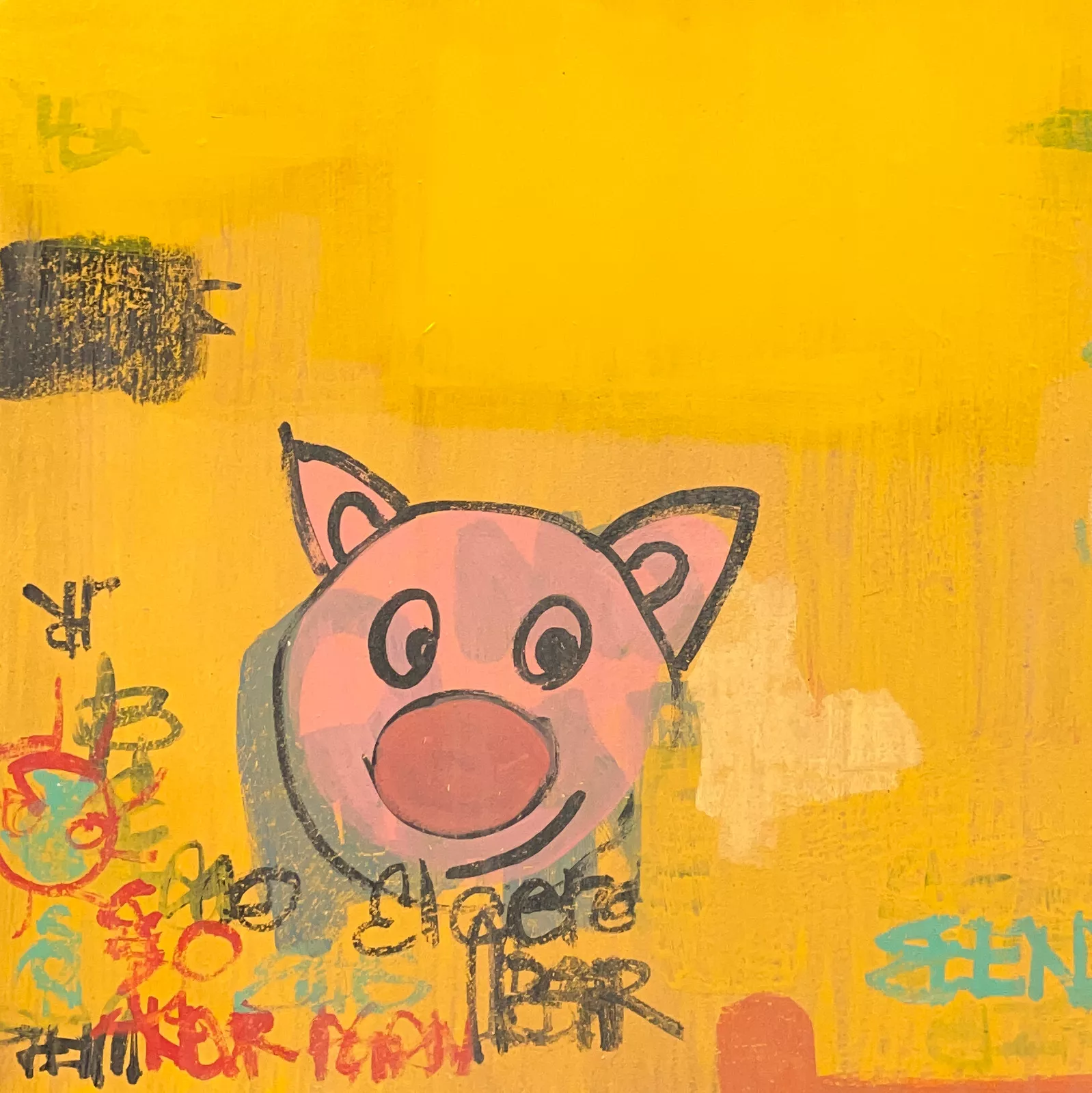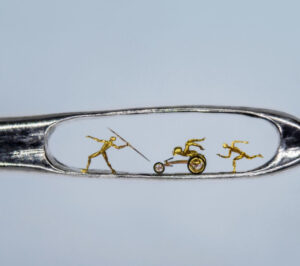Art has always been a mirror of society, reflecting the cultural, technological, and psychological landscapes of its time. From the detailed Renaissance portraits of Leonardo da Vinci to the expressive brushwork of Van Gogh, portraiture has evolved with artistic movements, techniques, and materials. Today, in an era dominated by digital screens, the question arises: How does portraiture adapt to the digital age?
Aleksandr Ilichev, a Russian painter known for his unique blending of realism and abstraction, offers an answer through his “Portrait of Pixels.” This artwork captures the tension between the human and the digital, presenting a figure that dissolves into pixel-like fragments, as though it were caught between two worlds—one organic, one technological.
A Brief Biography
Born in 1958, Aleksandr Ilichev is a Russian painter whose career has been deeply rooted in both traditional painting techniques and modern abstraction. He studied at:
•The Pedagogical College in Bijsk (Graphic Department, 1973-1975)
•The Art College in Novoaltaisk (Painting Department, 1975-1977)
•The Art Institute in Krasnoyarsk (Ceramic Department, 1978-1983)
Throughout his artistic journey, Ilichev has been a member of the Russian Union of Artists since 1990, showcasing his works both in Russia and internationally. His paintings exhibit a deep understanding of form, light, and texture, but what truly sets him apart is his ability to blend realism with digital-inspired abstraction.
Ilichev’s paintings often incorporate:
Fragmented compositions – Faces and bodies dissolve into geometric shapes, mirroring the pixelation of digital screens.
Dynamic color palettes – A fusion of bold hues and muted tones, creating contrast and depth.
A combination of realism and abstraction – Human figures emerge from abstract backgrounds, blurring the line between digital deconstruction and traditional portraiture.
Textured brushwork – The layering of paint adds movement, reinforcing the sense that his subjects are in a state of flux.
These elements are particularly evident in “Portrait of Pixels,” one of his most intriguing and thematically rich works.
“Portrait of Pixels”: A Digital-Age Masterpiece
Visual Analysis
At first glance, “Portrait of Pixels” presents a portrait that seems almost traditional—until you notice the pixel-like squares disrupting the form. The subject’s face is partially fragmented, dissolving into abstract blocks of color. This effect mimics the way digital images are composed and deconstructed, as if the person in the painting is slowly being digitized—or erased.
Key features of the composition include:
•A soft yet structured face – The portrait retains realistic facial features, emphasizing the subject’s humanity.
•Pixelated abstraction – Parts of the face and hair are reduced to square and rectangular shapes, a direct reference to digital pixelation.
•A muted, monochromatic color scheme – Hints of grays, whites, and subtle warm tones suggest a blending of the organic with the mechanical.
This juxtaposition of human realism and digital fragmentation is where the power of “Portrait of Pixels” lies.
Symbolism and Meaning
Ilichev’s work, especially in “Portrait of Pixels,” speaks to broader cultural themes, including:
The Digitalization of Identity
In the modern era, identity is increasingly shaped by digital technology. We edit, filter, and pixelate our images on social media, creating curated versions of ourselves. “Portrait of Pixels” reflects this process—where the subject seems to be both emerging from and dissolving into a digital realm.
Does the pixelation represent the loss of authenticity in the digital age? Or does it symbolize a new form of existence, where the physical and the virtual are intertwined?
The Fragility of Memory
Pixelation can also symbolize the erosion of memory, much like how old digital images degrade over time. In an era where we rely on screens to store our history, what happens when pixels fail us?
Ilichev’s piece forces us to confront how technology reshapes not just our present selves but also our recollection of the past.
The Intersection of Art and Technology
Traditionally, paintings have been seen as timeless, capturing the essence of their subjects in a way that transcends eras. But digital images are fleeting—subject to compression, corruption, and deletion.
By integrating pixels into a traditional portrait, Ilichev challenges us to consider whether paintings and digital images are so different after all.
How “Portrait of Pixels” Fits Into Contemporary Art
Ilichev’s work aligns with broader artistic movements that explore the relationship between technology and identity. Similar approaches can be seen in:
Glitch Art
Glitch art deliberately distorts and pixelates images, often using digital corruption to create fragmented visuals. Ilichev achieves a similar effect through paint, rather than software, making his approach both innovative and deeply tactile.
Post-Internet Art
Artists like Rafal Dominik and Cory Arcangel explore how the internet alters artistic expression. Ilichev’s work resonates with this movement, but he brings it into the realm of traditional fine art, bridging the gap between classical portraiture and digital culture.
Abstract Realism
Much like Gerhard Richter, Ilichev’s technique blurs the line between hyperrealism and abstraction. “Portrait of Pixels” captures a face in detail, yet lets it dissolve into non-representational forms—mirroring how digital screens sometimes fail to render reality perfectly.
Ilichev’s Influence and Legacy
Ilichev’s work is gaining recognition among collectors and modern art enthusiasts who appreciate the fusion of tradition and technology.
•His paintings are exhibited on platforms like Singulart and Saatchi Art, where they attract global buyers.
•His Instagram, @sashailichevart, offers glimpses into his creative process.
A Bridge Between Generations
One of Ilichev’s most important contributions is his ability to connect generations.
•For older audiences, his technical skill and brushwork evoke the masters of portrait painting.
•For younger, digital-native audiences, his pixelated approach feels fresh and relevant, speaking to their experiences in a screen-dominated world.
This ability to speak across artistic eras ensures that his work remains both timeless and contemporary.
Final Thoughts: The Future of Pixelated Portraiture
Aleksandr Ilichev’s “Portrait of Pixels” is more than just a painting—it is a statement about art, identity, and technology in the 21st century.
•It forces us to confront our relationship with digital images.
•It challenges the way we perceive reality in an age of screens.
•It bridges the gap between classical portraiture and modern digital aesthetics.
As art continues to evolve alongside technology, Ilichev’s work serves as a landmark in the conversation between past and future, tradition and innovation.
In an age where portraits are more likely to be stored on a hard drive than painted on canvas, “Portrait of Pixels” reminds us of the beauty and complexity of the human face—both in its organic form and in its pixelated, digital reflection.
Key Takeaways
•Aleksandr Ilichev is a Russian painter blending traditional realism with digital abstraction.
•“Portrait of Pixels” captures the tension between human identity and digitalization.
•The pixelated aesthetic challenges us to rethink art in a screen-dominated world.
•Ilichev’s work is part of a larger movement exploring the relationship between technology and fine art.
•His art resonates with both classical and contemporary audiences, making him a pivotal figure in modern portraiture.
Through his unique blend of paint and pixels, Ilichev reminds us that even in a world of screens and digital representations, the human face—and its artistic portrayal—remains as captivating as ever.
No comments yet.








